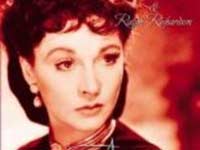Just In
- 10 min ago

- 49 min ago

- 3 hrs ago

- 4 hrs ago

Don't Miss
- Finance
 Rs 8.50/Share Dividend Recommended: Nestle India Reports 27% YoY Jump In Profit
Rs 8.50/Share Dividend Recommended: Nestle India Reports 27% YoY Jump In Profit - Automobiles
 FanCode Brings The 2024 DTM Season To India With Exclusive Broadcast Rights
FanCode Brings The 2024 DTM Season To India With Exclusive Broadcast Rights - Education
 JEE Main Result 2024 Out, Check Category- Wise Toppers' List Here
JEE Main Result 2024 Out, Check Category- Wise Toppers' List Here - Movies
 Kung Fu Panda 4 OTT Release Date & Platform Fixed: When & Where To Watch The Epic Animation Comedy Film
Kung Fu Panda 4 OTT Release Date & Platform Fixed: When & Where To Watch The Epic Animation Comedy Film - Technology
 Qubo InstaView Video Door Phone Launched in India: Check Price, Features
Qubo InstaView Video Door Phone Launched in India: Check Price, Features - News
 Karnataka Weather Alert: Clouds And Sun to Play Together In Bengaluru Weather Forecast
Karnataka Weather Alert: Clouds And Sun to Play Together In Bengaluru Weather Forecast - Sports
 Gukesh D: How Much Money Indian Grandmaster won from FIDE Candidates?
Gukesh D: How Much Money Indian Grandmaster won from FIDE Candidates? - Travel
 Escape to Kalimpong, Gangtok, and Darjeeling with IRCTC's Tour Package; Check Itinerary
Escape to Kalimpong, Gangtok, and Darjeeling with IRCTC's Tour Package; Check Itinerary
Anna Karenina: Poetic Painting Of Human Emotions

The novel is divided into eight parts. The novel begins with one of its most quoted lines, "Happy families are all alike; every unhappy family is unhappy in its own way." In the beginning of this novel Leo Tolstoy imagined of a woman from a high class society who had committed adultery. However instead of characterizing the woman as guilty, he painted her picture as a pitiful woman. It is believed that Tolstoy got inspired by Pushkin's heroine Zinaida Volsky to characterize Anna.
Tolstoy wrote and rewrote the novel several times to make it a perfect masterpiece after his War And Peace. He created his own autobiographical character Konstantin Dmitrievitch Levin, who becomes a major protagonist in the novel. Both Anna and Levin challenge the criteria in the society for a passionate involvement with their own desires which offers a taste of freedom and a trap for destruction.
Anna is the jewel of St. Petersburg society until she leaves her husband for the handsome and charming military officer, Count Vronsky. The lovers go beyond society's external conditions of trivial adulterous dalliances. However Vronsky's love cools and Anna cannot bring herself to return to the husband she detests. Unable to return to a life she hates, she kills herself.
Levin is a wealthy landowner from the provinces who could move in aristocratic circles, but who prefers to work on his estate in the country. Levin tries unsuccessfully to fit into high society when wooing the young Kitty Shcherbatsky in Moscow; he wins her only when he allows himself to be himself.
Tolstoy's style in Anna Karenina is considered to form a bridge between realist and modernist novel. The narration is from a third-person-omniscient perspective, shifting between the perspectives of several major characters. Set in the latter half of the nineteenth century Russia, the novel gives glimpses to the country's socio-political issues. He also draws contrasts between the peace and wholesomeness of the country and the decadence of urban society. As a whole the novel contains the nucleus of Tolstoy's programme for non-violence and abstention from worldly riches. This idea makes the novel a classic of all times and Tolstoy as one of the world's most venerated teachers.
Submit your book reviews and get it published
If you are a student, send your book queries to us
-
 lifeMost Sexually Active Countries In The World In The Year 2018
lifeMost Sexually Active Countries In The World In The Year 2018 -
 marriage and beyondExtra-Marital Affair Is Expensive
marriage and beyondExtra-Marital Affair Is Expensive -
 pulseIf It Could Happen To Buddha Why Not You?
pulseIf It Could Happen To Buddha Why Not You? -
 pulseDeath, Dying And Beyond...
pulseDeath, Dying And Beyond... -
 pulseSangeeta Bhagawat's Emotional Freedom Techniques
pulseSangeeta Bhagawat's Emotional Freedom Techniques -
 trends n styleThe Exciting Shopping Deals For Black Friday 2009
trends n styleThe Exciting Shopping Deals For Black Friday 2009 -
 chickenGruyere Panade
chickenGruyere Panade -
 kidsThe Pretty Parrot And The Fiery Fox
kidsThe Pretty Parrot And The Fiery Fox -
 pulseAlexander Hamilton: This Is A Mortal Wound..
pulseAlexander Hamilton: This Is A Mortal Wound.. -
 fresh chutneysHow To make Delicious Sweet Tamarind Chutney?
fresh chutneysHow To make Delicious Sweet Tamarind Chutney? -
 pulseDoes The Practice Of ‘Corpus Delicti’ Deny The Justice?
pulseDoes The Practice Of ‘Corpus Delicti’ Deny The Justice? -
 pulseA Taste Of Life: The Last Days Of U.G.Krishnamurti
pulseA Taste Of Life: The Last Days Of U.G.Krishnamurti


 Click it and Unblock the Notifications
Click it and Unblock the Notifications



